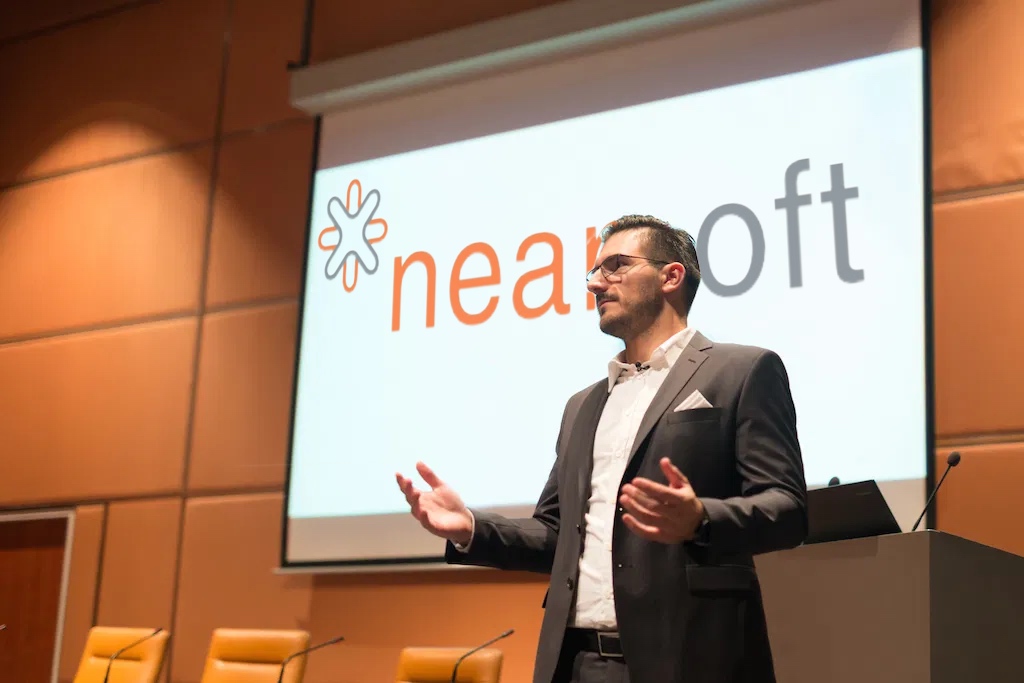
Teamwork and goal planning at Amazon
Amazon cannot be called a completely horizontal company. Yes, compared to companies that emerged in the 60s and 80s, Amazon has a looser management structure. But if you compare them to Facebook and other young teams, the world’s largest online retailer sits somewhere in the middle between hierarchical and horizontal structures.
Team composition
The size of one team at Amazon averages 10-15 people.
There is something like an unspoken rule: the number of people in the team should not exceed the number of people who can be fed with two large pizzas. Sometimes this rule is not respected, but in that case, the team split into several parts.
The whole team sits in one office, so they have the opportunity to see who and what they do, at what stage of the problem is solved. It is possible to work remotely, but most people prefer office work.
If someone slows down in their work, there is a special manager who helps them get back on track. He communicates with co-workers, helps figure out what the problem is and fixes it. Amazon prefers to keep people on the team, not lose them. Because losing a specialist is the extra cost of finding a new staff, its training, downtime due to lack of expertise.
In terms of professional communication, Amazon has an engineering approach, engineers dominate here. It is important for them that specialists in other roles talk to them in the same language, that newcomers show that they want to understand the subject, make an effort. When a new person comes in, the message is, “Show me what you can do. If you don’t know how to do anything, show me what you want to learn and show me the results in six months.”
This is where it’s helpful to talk to the timelines and higher level programmers who do an important part of the product. It helps to stay focused and understand the tasks better.
Communications within the team are routine meetings. At Amazon, from the early days, it was not common to invite colleagues to a large number of meetings. Everyone tries to value each other’s time. Now there are more meetings, but you can always talk your way out of them.
Each team can use whatever tools are comfortable for them. The important thing is that they pass security clearance because customers, especially in Amazon Web Services, are very demanding about security. For example, a lot of people use Skype, but Slack didn’t pass the security check.
As I said in a previous article about Amazon, here they try to do everything themselves. For example, there is an internal, but optional, platform for communication between teams. It’s still a bit crude, but employees use it because they want to give feedback to help develop the project. If they want to, they can switch to another platform.
In general, management is very encouraging of communication among employees between teams to make the product work well.
Goal setting
Goal setting for the company and the teams within it at Amazon, is a mutual process. Company leaders, the board of directors, approve the plan for the next year. They discuss which projects they will work on and which they can postpone.
At the same time, a similar process takes place within the teams. Each participant fills out a document entitled “What I want to do next year,” and offers ideas for development. In many departments, there are people sitting there with burning eyes just waiting to be asked, “What are we going to do?” Such proposals go through several filters and make their way to the vice presidents, who approve or reject the ideas and then return them to the teams on the principle of “We came up with them, we’ll do it ourselves.
After receiving the task, the team comes up with its own metrics and agrees on them with the managers. Team members agree between themselves who will perform what task and define their own metrics. Performance tracking takes place once a month. The results go to higher levels for analysis and are distributed to different managers depending on priority.
Amazon lives by documents.
There is almost no presentation done here. You need a good reason to send someone a presentation. They are used when they need to show something to users. But for internal tasks, the company uses documents in different formats: press release, work on mistakes, etc.
For example, they write a press release even if they want to show a new idea before they work on the project. Company managers say, “describe it as if you are already showing the result to users at a press conference.
There is no central repository of documents, which automatically collects all materials in the corporation. Therefore, there is no way to see all of the documents that a team has created over a certain period of time. But the team can manually upload documents to an internal system such as Wikipedia. There they publish everything that describes how the system works, the materials that have received approval, and those that did not go into production, but their study would be useful in the opinion of the staff.
Work on bugs.
One of the mechanisms that Jeff Bezos and management have come up with is work on mistakes. After any project that is recognized as unprofitable or a failure, the people in charge of that project fill out a special document, the Correction of errors. Even events that were unnoticeable to users, but could affect them after a few iterations, are considered errors. If there is any obvious error, Amazon fills out the Correction.
This document has a specific format that helps to figure out what happened and find the root cause of the error.
First question: “Why did this happen?”
Second question: “Think again and answer the first question.
The question is repeated five times, so that the employee doesn’t just write an excuse, but actually thinks about it and finds out the real reason for the problem.
Working on mistakes is a process that tells the person: if something happens, you will work long and hard to fix it, it just won’t go away.
After the form is filled out, meetings take place until everyone involved in the process is satisfied and credits the work on the mistakes with actually getting it done. It’s not a perfect way, but in most cases it works.
Team leaders usually write these reports. But they can bring in any participant they see fit. For example, a cool engineer who can write any report without tips or help, distributes the writing of different parts of the document to his colleagues so that they learn to do it too. Sometimes the work on mistakes is given to junior engineers who are not yet able to do much at all. This develops a sense of ownership and responsibility, so that when someone wants to be promoted, they already have the skills needed for the new position.
The work on mistakes is checked by colleagues at a higher level.













